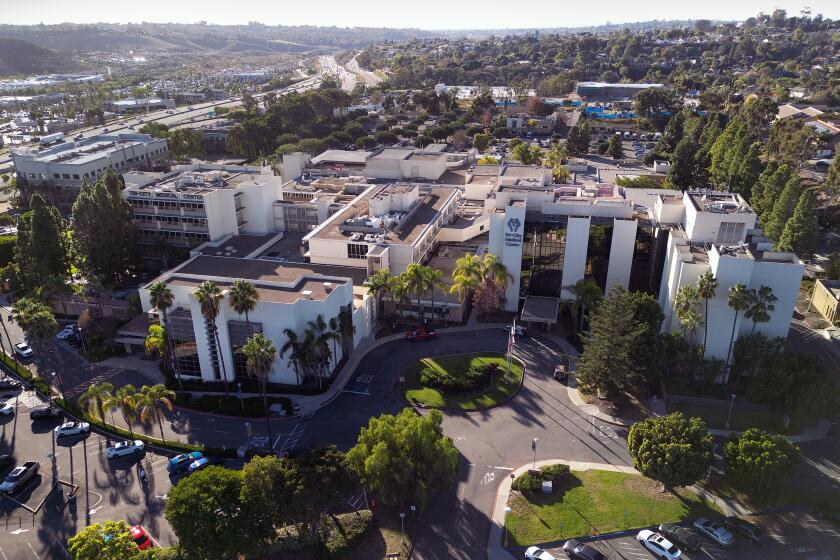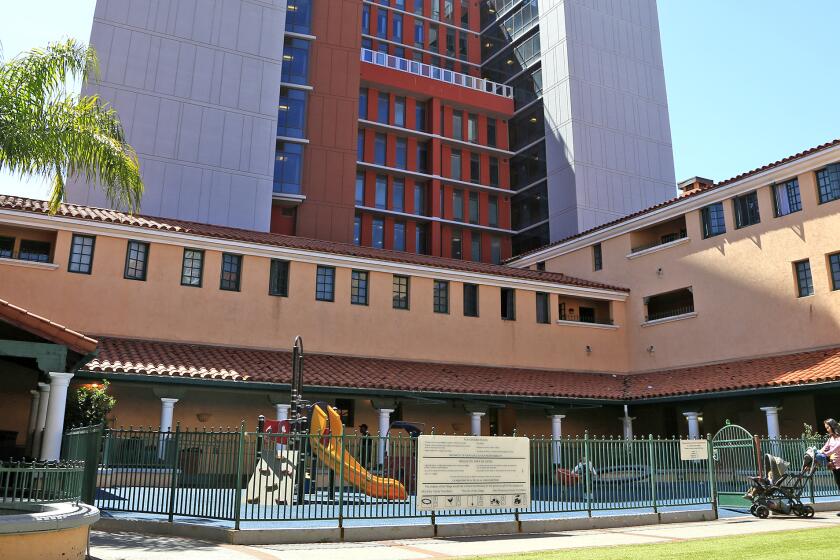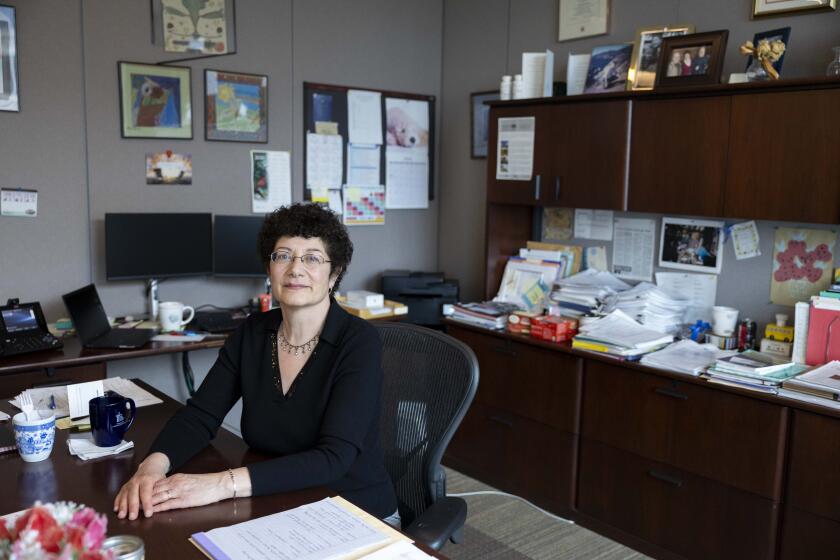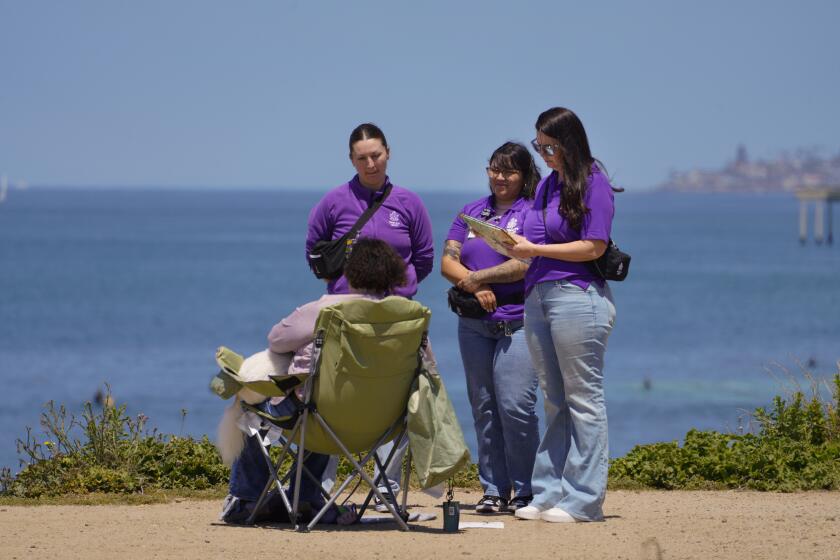A $22 million donation to UC San Diego Health will establish a mission control center to manage emerging AI

Philanthropists Joan and Irwin Jacobs help pay for center to aggregate streams of digital information
With artificial intelligence rapidly changing health care, UC San Diego Health is planning to treat the situation with a level of attention usually reserved for rocket launches and wildfires.
A $22 million donation from philanthropists Joan and Irwin Jacobs will help pay for a mission control center inside its main La Jolla medical center to consolidate the ever-growing streams of digital information that are increasingly providing actionable information at the bedside.
Hundreds gathered in a university auditorium Friday to listen to the latest thinking about how this technological transformation is likely to unfold, with Irwin Jacobs sitting in the front row, soaking up every detail.
The digital communications pioneer with a doctorate in electrical engineering said during a lunch break that it was clear in the planning stages of UC San Diego Jacobs Medical Center, the state-of-the-art La Jolla hospital that now bears his name, that the proliferation of information technology in medicine would eventually require more coordination.
“It was kind of decided, well, we’re getting all of this data, but none of it’s really connected. We need to get it into one place including not just the hospital system, but also from outside, and then have a few different types of people in there who can react very quickly to what they’re seeing,” Jacobs said.
These days, everything from bedside monitors to air-handling equipment produces endless digital information, and recent advances in artificial intelligence are showing a stunning capacity to sift through this mountain of ones and zeros to find patterns that can spot errors and, increasingly, predict who might be about to develop a new set of symptoms.
A good example, said Dr. Christopher Longhurst, the university health system’s chief medical and digital officer, is an emergency room program that is using AI to analyze bedside and electronic health record data to predict which patients are at the greatest risk of developing sepsis, a runaway reaction to infection that can cause deadly organ failure.
“We implemented this algorithm six months ago, and our emergency department, in the last six months, we’ve had the lowest observed (versus) expected mortality and sepsis that we’ve ever seen at UC San Diego Health,” Longhurst said.
Other efforts are underway to use AI to predict which patients will develop bowel obstructions after surgery, and a remote telemonitoring program is now receiving data from the homes of more than 2,500 patients with chronic diseases.
More recently, UCSD was two systems nationwide to enable AI-enhanced recommendations for its doctors to review when responding to patient emails.
And this is just the beginning. Every new application, Longhurst notes, will generate its own set of notices. Asking bedside workers to parse this flow is impossible, meaning that a separate team of professionals will be necessary to decide what needs to be passed along to caregivers and what can wait.
“It’s Apollo 13, right?” Longhurst said. “Those guys didn’t land on the moon by themselves, they had help.”
Though the need for such an approach is already arriving, the executive said it is expected to take several years for the new command center, which will also have two components situated outside the hospital, to get up and running.
For now, AI’s potential to make routine tasks more manageable for medical professionals seems to be engendering the most excitement.
Panelists who spoke during Friday’s symposium were asked what about the coming AI health care revolution excites them the most in the near term. Most said they were very optimistic about the ability of algorithms to help free up medical professionals’ time by assisting with routine tasks, such as responding to patient emails for medical testing and other routine communication that piles up during the work day and impinges on personal lives.
Having help grinding through the grist of modern health care, in theory, should free up time for meaningful conversations with patients.
Sitting back after eating Cinco de Mayo tacos, Holly Smith, UC San Diego’s population health clinical nurse educator, said she hopes that’s how it goes. Technology, she said, will clearly be necessary to meet the ever-increasing health care demands of an aging population.
But, she said, gains in efficiency must be balanced with the human touch.
“We don’t want to use that data to make things so efficient that we take that human piece out,” Smith said. “A careful, managed approach is important, and so is making sure to get the perspective of the people that are in the field doing that front-line work with the patients.”
Get Essential San Diego, weekday mornings
Get top headlines from the Union-Tribune in your inbox weekday mornings, including top news, local, sports, business, entertainment and opinion.
You may occasionally receive promotional content from the San Diego Union-Tribune.












